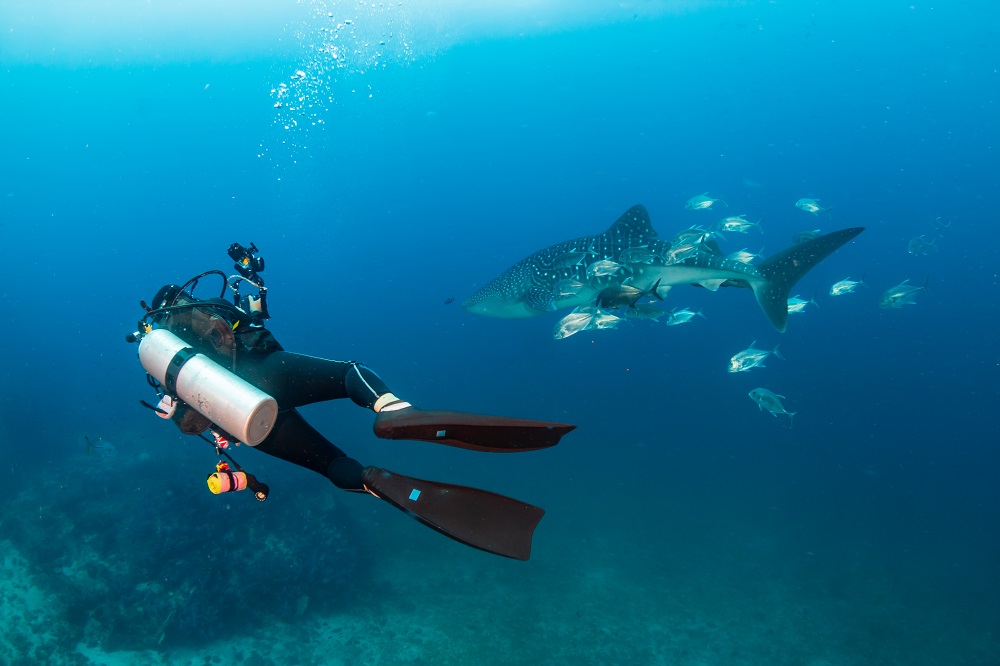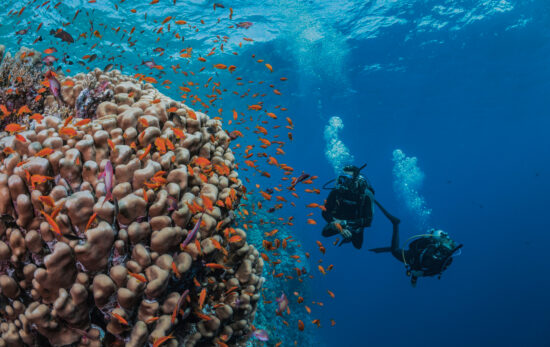Sharks are some of the coolest and well-known fish in the sea. Some sharks, like great white, tiger and bull sharks, seem formidable and even invincible. While sharks have lived on Earth for over 400 million years, they are facing many threats today. Recent studies show that one third of all chondrichthyans (sharks and their relatives) are endangered, shark and ray populations fell by 71.1% from 1970 to 2018, and sharks are missing from 19% of the world’s coral reefs. This begs the questions, are sharks endangered? Are all sharks endangered, or at risk of extinction?
While not every single shark species is endangered, many are. And if the threats to sharks and ocean health go unmitigated, more sharks can become endangered and eventually go extinct. Read on to learn why sharks are endangered and how you can help protect them.

Why Are (Many) Sharks Endangered?
As we mentioned above, it’s estimated that about a third of all shark species are endangered. On top of that, it’s worrisome that some shark populations are declining, too.
Why are sharks endangered? What are their threats?
Sharks grow slowly, are long-living, reproduce late in life and don’t have that many offspring, which make them vulnerable to overfishing, bycatch, and climate change. Both overfishing and bycatch (the accidental catch of non-target species) contribute to the removal of sharks from the ocean ecosystem. Together, these threats slow efforts for shark populations to rebuild and recover.
Climate change is another threat to sharks due to shifting ocean conditions, like warmer ocean temperatures and ocean acidification. These changes affect habitats, the health and distribution of prey, and, in turn, sharks. This combination of shark reproduction and climate threats is not good news for sharks.

Which Sharks Are Endangered?
There are about 500 shark species, so if a third of them are endangered, that means approximately 167 sharks are endangered. That would be a long list to include here! But, check out this article, which expands on endangered sharks, and the IUCN Red List to find all endangered sharks (and species in general). As just a couple examples, here are some of divers’ favorite sharks to see that are also endangered.
Oceanic Whitetip
The oceanic whitetip shark is critically endangered, and its population is decreasing. According to NOAA, threats to these sharks are commercial fishing, bycatch, and harvest for international trade. They are large sharks with white markings on the tips of their dorsal, pectoral, and tail fins, hence the name whitetip sharks. They swim in the open ocean globally in tropical and subtropical waters. Check out this PADI blog on diving with oceanic whitetip sharks and blue marlin in the Bahamas!
Scalloped Hammerhead
The scalloped hammerhead shark is also critically endangered, and its population is decreasing according to the IUCN Red List. Overfishing and bycatch threaten them with extinction. Scalloped hammerheads can grow up to 11 feet (3 meters) and have a distinct hammer-shaped head. They live worldwide in the open ocean of tropical and warm temperate waters in places like the Galapagos. Furthermore, they are migratory and have been observed to form large schools of hundreds of individuals.
Great Hammerhead
The great hammerhead shark is also critically endangered with a decreasing population and threatened by overfishing and bycatch. These sharks are also the largest of all hammerhead sharks, growing up to 13 feet (4 meters), and they have a hammer-shaped head that’s nearly straight across with a prominent indentation in the middle. The great hammerhead lives worldwide in tropical waters from coastal to open ocean habitats, and you can dive with great hammerheads in Bimini!

How You Can Help Sharks
There are many actions you can take to help sharks, including:
- Support responsible shark and ray tourism. When you travel to dive with sharks, it’s important to do so in a way that does not harm the health of the sharks and their environment.
- Support PADI AWARE. This nonprofit organization partners with PADI to engage divers in local action for global ocean conservation. One of the several conservation issues PADI AWARE addresses is the protection of shark and ray species. The program goal is to reduce the number of shark and ray species threatened with extinction.
- Don’t buy or use shark products. Avoiding these products can help reduce the market demand for shark products, and reduce overfishing.
- Eat sustainably-caught seafood. Generally, seafood that is caught or raised in a way that reduces overfishing, bycatch, and environmental impacts is sustainable seafood.
- Continue learning about sharks. Part of protecting sharks includes understanding them and how they interact with the environment. There is still much to learn about sharks!
- Protect the ocean. The ocean is the home of sharks, so a healthy, clean ocean is vital to the success of sharks. You can protect the ocean by supporting sustainable practices to reduce carbon emissions, marine debris, and more!
Sharks are amazing but unfortunately many sharks are endangered. Take action today to protect sharks!



